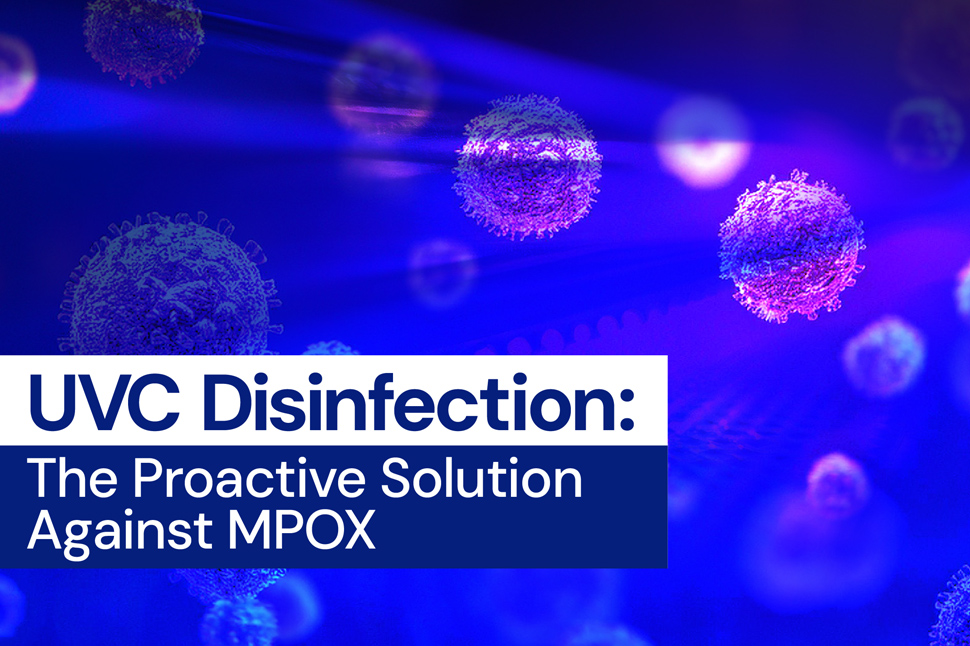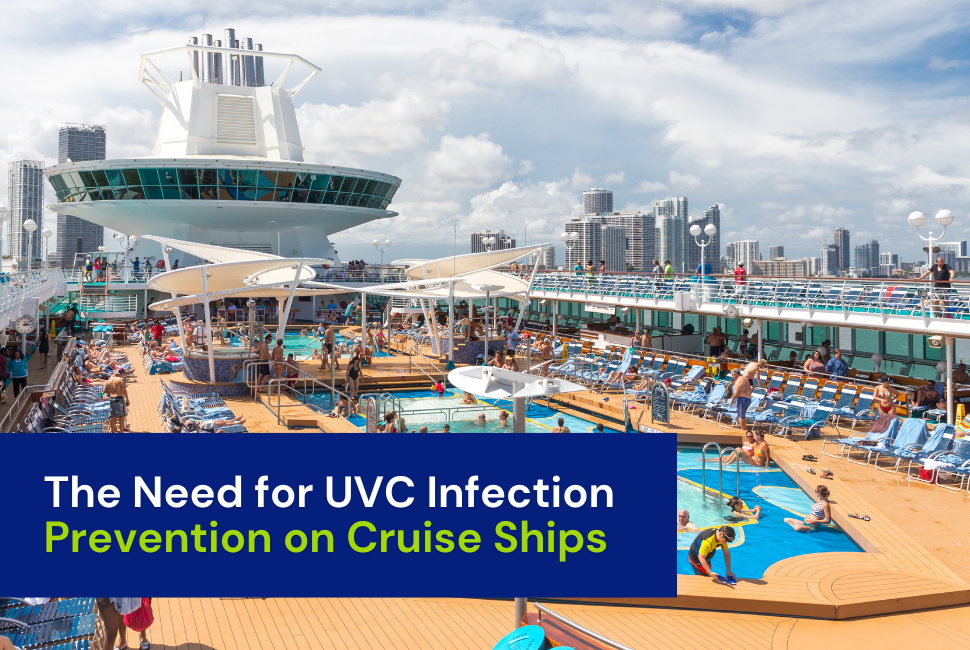Developing an effective, proactive strategy for controlling the spread and impact of mpox
The World Health Organization has declared an international public health emergency for the 2024 mpox surge. The contagious nature of mpox, formerly known as monkeypox, and the challenges associated with its control have raised concerns. Traditional cleaning methods often fail to fully eradicate this virus from surfaces and air, highlighting the need for more advanced solutions. One promising option is UVC light disinfection technology.
Stopping Pathogens in Their Tracks
UVC light is a type of precisely-controlled ultraviolet light that, though invisible to the human eye, possesses powerful germicidal properties. When used correctly, UVC light can destroy the DNA or RNA of various microorganisms, including viruses, bacteria, and fungi, rendering them inactive.
Preventing the Mpox Spread at the Genetic Level
Like other viruses, the mpox virus is composed of genetic material encased in a protein coat. Upon exposure to UVC light, the virus’s DNA or RNA absorbs ultraviolet energy. This leads to replication errors or directly harms the viral genome.
By damaging the virus’s genetic material, UVC light prevents it from reproducing. This means that even if the virus remains on surfaces or in the air, it cannot spread and cause infections. Also, UVC light targets the virus’ protein coat, compromising its ability to attach to and invade host cells. This is crucial for halting the infection cycle early.
A Thorough Defense Against Mpox
UVC light is integrated into various disinfection technologies, such as air purifiers, disinfection cabinets, and whole-room sanitizers. These tools can be used in healthcare settings, public transportation, and businesses to provide an additional layer of protection against mpox.
Since mpox spreads through contact with infected persons, lingers in the air around them, and remains on surfaces they touch, multiple types of UVC devices must be considered.
Whole-room UVC devices disinfect floors, walls, countertops, doorknobs, and cabinets. These devices emit UVC light to cover large areas, ensuring all exposed surfaces receive adequate germicidal treatment. This is particularly useful in hospitals and quarantine facilities where thorough disinfection is critical.
For respiratory protection, UVC-equipped air purifiers clean the air in enclosed spaces. These purifiers draw in air, expose it to UVC light, and then circulate clean air back into the environment, reducing airborne transmission. Combined with HEPA filters, UVC air-purifying systems are incredibly effective at improving indoor air safety. UVC air purifiers are game-changers for pathogen protection in indoor spaces like schools, offices, and public venues
A Word of Caution
Because UVC light is so potent, it must be used with caution. Direct exposure to UVC light can be harmful to human skin and eyes. Therefore, it is imperative that these devices include safety features such as timers and motion detectors to prevent accidental exposure. Organizations can make the most of UVC light while ensuring safety through thorough staff training.
UVC light disinfection technology offers a promising solution for controlling the spread of the mpox virus. As we seek more efficient ways to combat infectious diseases, UVC light stands out as a practical and effective tool in our arsenal.
Get in touch with us if you’d like to learn more about UVC disinfection solutions for your space.



